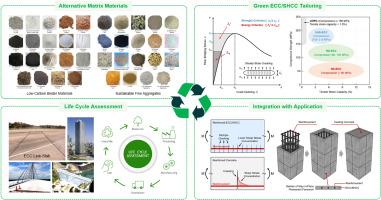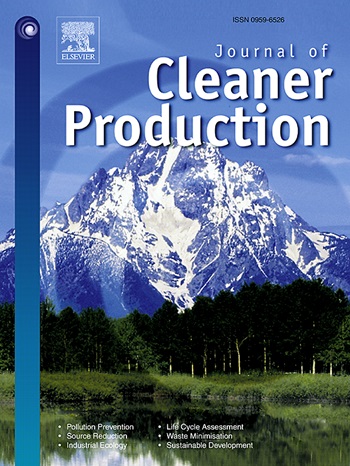Green and Low-Carbon Matrices for Engineered/Strain-Hardening Cementitious Composites (ECC/SHCC): Towards Sustainable and Resilient Infrastructure
IF 9.7
1区 环境科学与生态学
Q1 ENGINEERING, ENVIRONMENTAL
引用次数: 0
Abstract
Engineered/Strain-Hardening Cementitious Composites (ECC/SHCC) are the mostly concerned high-performance fiber-reinforced cementitious composites in recent years. Well-known for their high/ultra-high deformation capacity (typically 3∼10%) and distinguished crack width control ability under tension, ECC/SHCC demonstrate significant potentials for use in resilient infrastructure applications. Incorporating industrial/agricultural/urban wastes/by-products into ECC production offers a compelling and sustainable approach to upcycle these materials, resulting in green and cheap ECC production. This study critically reviews the utilization of wastes/by-products as green and low-carbon matrix materials (including binders and aggregates) to enhance the overall sustainability of Portland cement-based ECC. The analysis encompasses their mechanical, durability, and environmental performances based on existing literature. Notably, sustainable binders are primarily prone to influence the fracture toughness of matrices and the fiber/matrix chemical/frictional bond, while sustainable aggregates tend to affect the fracture toughness of matrices, fiber orientation and distribution, fiber/matrix frictional bond, and aggregate/matrix interfacial bond. The findings underscore the practical applicability of ECC with sustainable matrices in infrastructure, supporting practitioners and policymakers in adopting materials that meet durability and environmental goals. This work concludes by presenting perspectives and recommendations for future studies, focusing on the use of low-carbon and sustainable matrices in ECC materials for greener and more resilient infrastructure.

工程/应变硬化水泥基复合材料(ECC/SHCC)的绿色低碳基材:迈向可持续和弹性基础设施
本文章由计算机程序翻译,如有差异,请以英文原文为准。
求助全文
约1分钟内获得全文
求助全文
来源期刊

Journal of Cleaner Production
环境科学-工程:环境
CiteScore
20.40
自引率
9.00%
发文量
4720
审稿时长
111 days
期刊介绍:
The Journal of Cleaner Production is an international, transdisciplinary journal that addresses and discusses theoretical and practical Cleaner Production, Environmental, and Sustainability issues. It aims to help societies become more sustainable by focusing on the concept of 'Cleaner Production', which aims at preventing waste production and increasing efficiencies in energy, water, resources, and human capital use. The journal serves as a platform for corporations, governments, education institutions, regions, and societies to engage in discussions and research related to Cleaner Production, environmental, and sustainability practices.
 求助内容:
求助内容: 应助结果提醒方式:
应助结果提醒方式:


